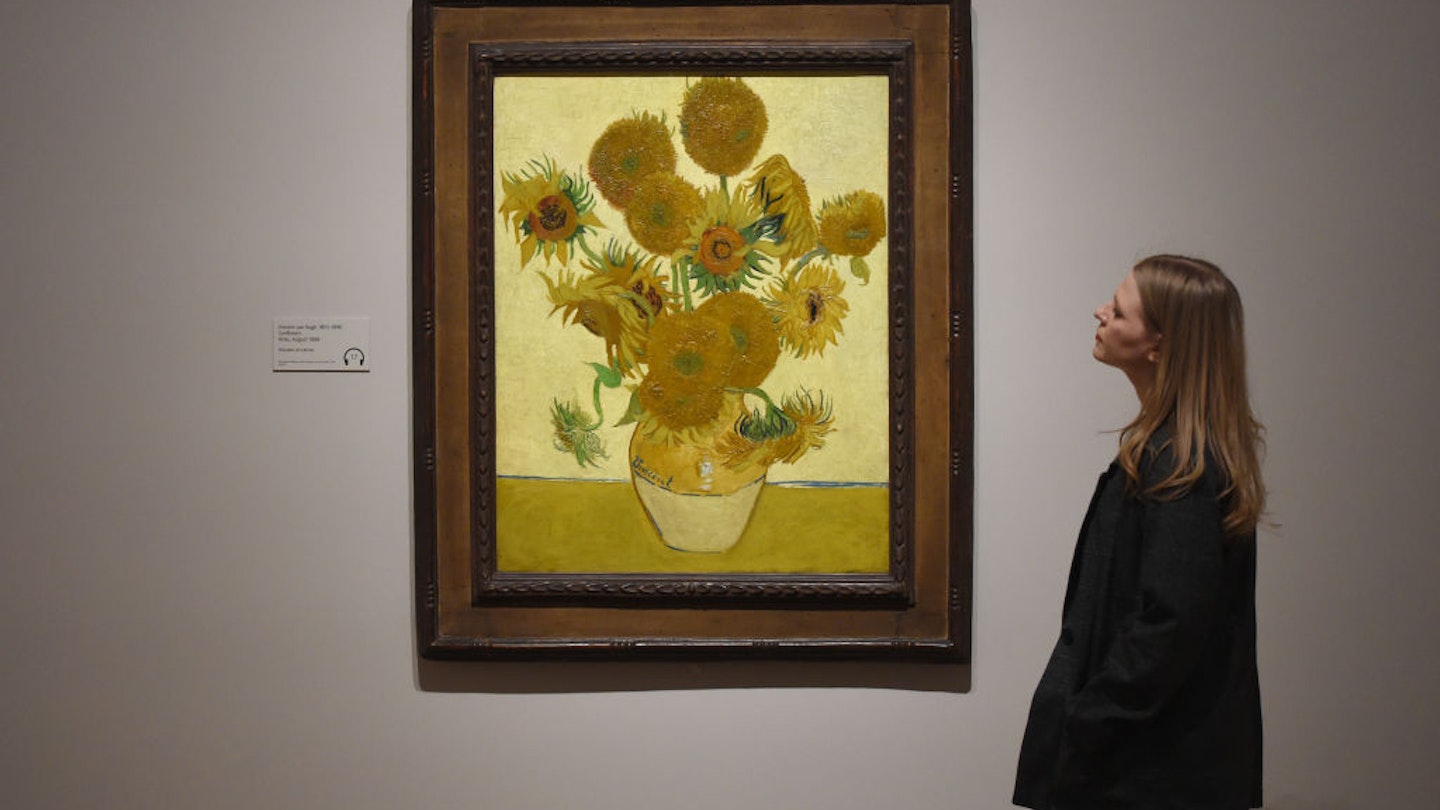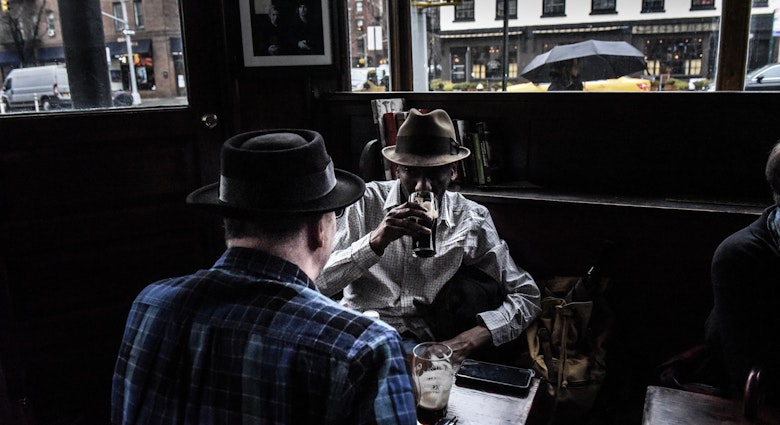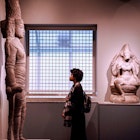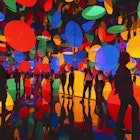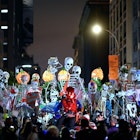There are few names more renowned in the world of art than Vincent Van Gogh. The Dutch post-impressionist is revered for his colourful, innovative style and romanticised for his tragic life (which saw him die before his work gained recognition), a combination that ensures the painter’s popularity endures to this day.
A new touring multi-sensory exhibition of his work has led to a surge in interest in the 19th century artist, but, when it comes to uncovering Van Gogh’s life and legacy, there is so much more to see.
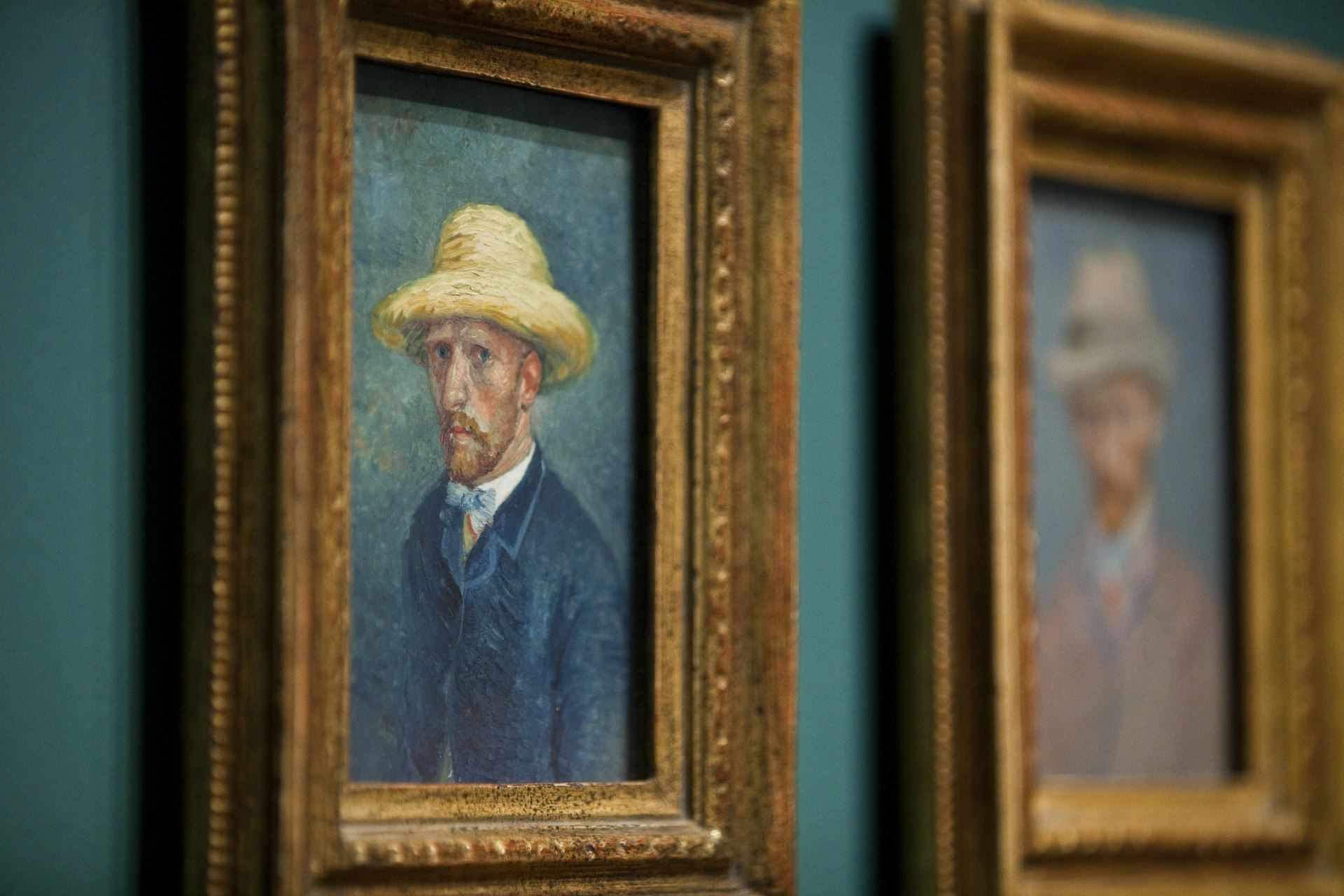
Though his painting career spanned only 10 years, Van Gogh was prolific, creating over 2000 works that are now scattered in museums and galleries around the world, from Cardiff (Landscape at Auvers in the Rain; National Museum) to Mexico City (Shepherd with a Flock of Sheep; Museo Soumaya).
Here we choose some of the essential Van Gogh stops for art fans, rounding up a selection of venues that house the most iconic and important paintings by the Dutch visionary, starting with his early efforts and running to his final, troubled days.
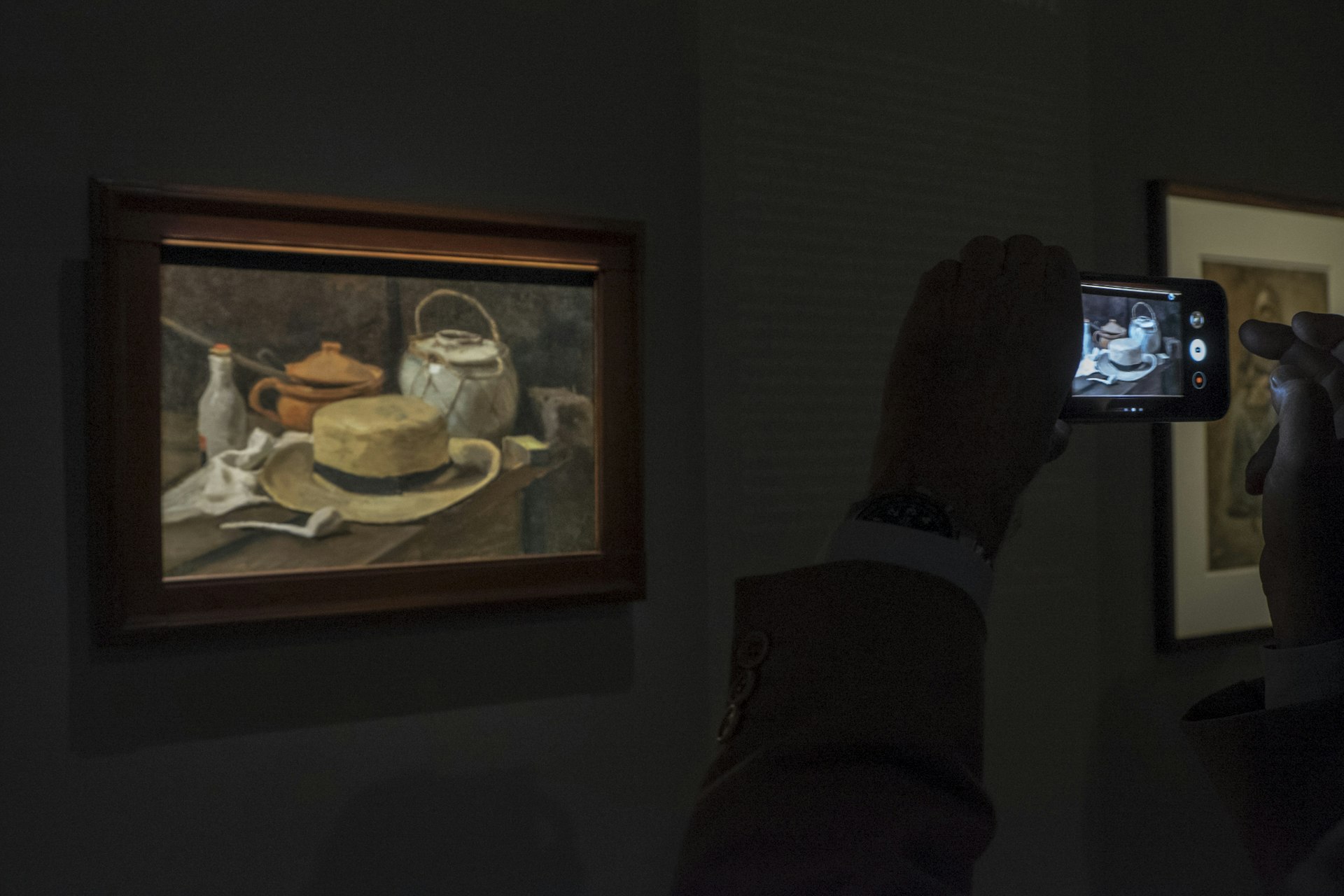
Editor's note: During COVID-19, please check the latest travel restrictions before planning any trip and always follow local government health advice. Events may be subject to change.
1. Kröller-Müller Museum, Otterlo
Having spent many years working as an art dealer (and sincerely flirting with the idea of becoming a priest), Van Gogh did not actually start painting until the ripe old age of 28.
Some of the artist’s earliest works hang in the Kröller-Müller Museum, a sleek, glass-walled venue in forested parkland near the village of Otterlo, the Netherlands. Still Life with Yellow Straw Hat shows a collection of objects on a desk, and probably dates to late-1881, making it one of three artworks that vie for the title of being Van Gogh’s oldest-known painting. A number of sketches are also on display here that are even older, mostly comprising of portraits of labourers in the village of Etten, where Van Gogh returned to live with his parents to pursue art in earnest (something his parents weren’t overly enthused about).
With the second-largest Van Gogh collection in the world, the Kröller-Müller also displays many other noted works by the artist from throughout his career, with the highlight of the collection arguably Café Terrace at Night. The painting of diners outside a coffee shop in Arles, France, is the first known example of Van Gogh using a starry background, a motif the artist would reuse in many of his best-known works.
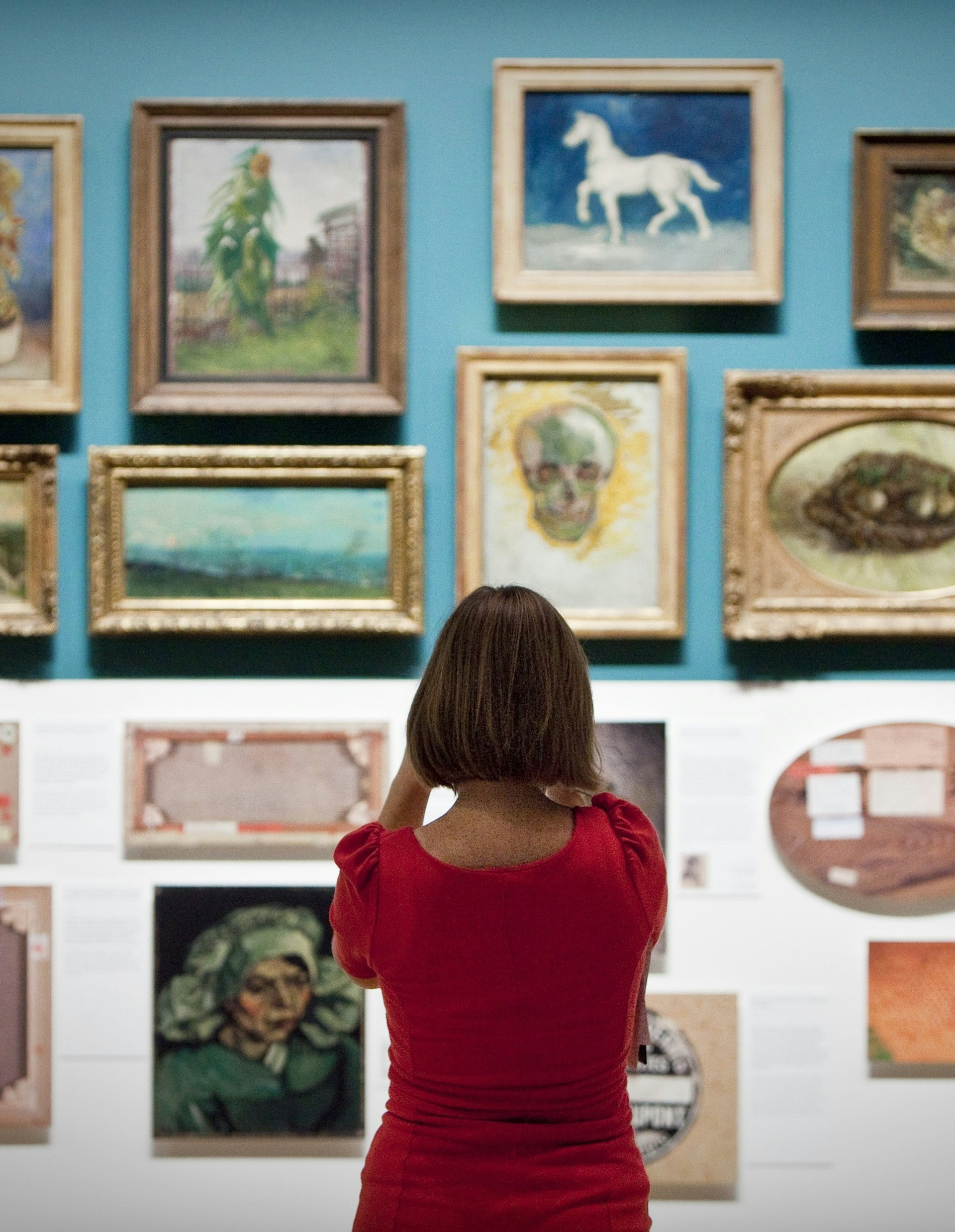
2. Van Gogh Museum, Amsterdam
The world’s largest collection of Van Gogh art can – fittingly – be found in the Van Gogh Museum, Amsterdam. It is here that art lovers will also find what is considered by many to be the Dutchman’s first masterpiece, The Potato Eaters.
The work, painted in 1885, continues Van Gogh’s interest in capturing the harsh reality of peasant life on canvas, with the painting depicting five farm workers sitting down for a meal together in a dimly lit scene; a style choice that contrasts sharply with the artist’s later works that are revered for their use of vivid colours.
As the de facto hub of Van Gogh’s artistic legacy, the museum is practically bursting with important works from throughout the artist’s life, including The Yellow House, depicting the building where the painter lived and worked in Arles, and Almond Blossoms, which was a gift from Van Gogh to his brother Theo (who supported him financially throughout his art career) following the birth of his son.
While here, visitors should also make time to see The Painter of Sunflowers, a portrait of Van Gogh at his easel painted by his long-time friend, occasional enemy and artistic contemporary, Paul Gauguin (though Van Gogh was initially not a fan of the work, saying Gaugin had painted him as a ‘madman’).
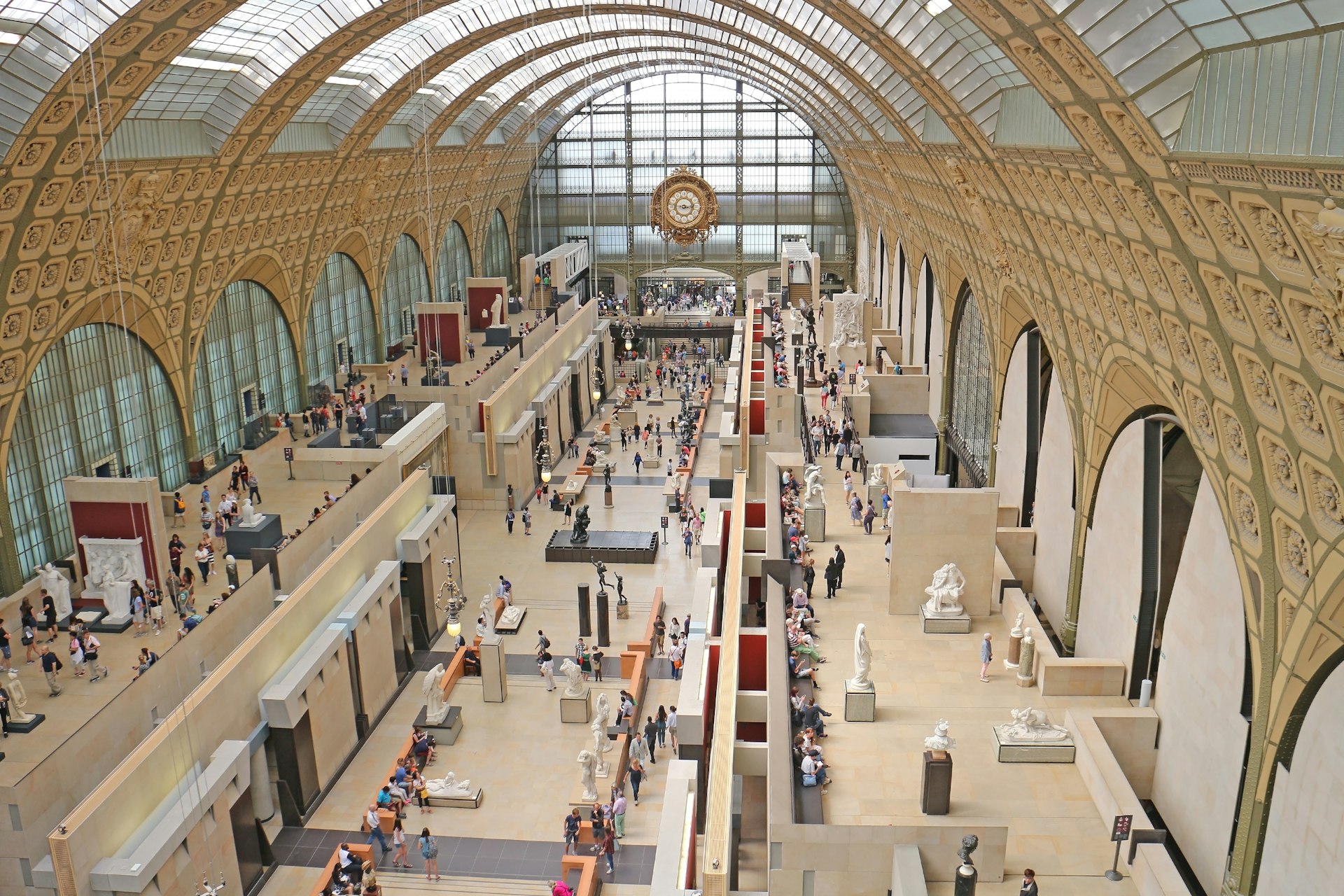
3. Musée d'Orsay, Paris
Following spells living in Nuenen, Antwerp and Paris, all of which resulted in relatively little noteworthy artistic output, Van Gogh decamped to the quiet French commune of Arles in 1888. The change of surroundings spurred something of a creative awakening in the painter, and a number of his most beloved works from this prolific period adorn the walls of Paris’s cavernous Musée d'Orsay.
Must-see ‘Arles’ works in the Left Bank museum include the evocative landscape Starry Night Over The Rhone and a smaller version of Bedroom in Arles (the original hangs in the Van Gogh Museum in Amsterdam). Though painted later in his career, Portrait of Dr Gachet is another gem in the museum’s collection. The painting is a second version of the portrait; the first edition of which became the most expensive artwork of all time when it sold for $82.5 million in 1990. Following the sale, the painting disappeared from all public records, and its current whereabouts are unknown.
The Musée d'Orsay also houses perhaps the most iconic self-portrait of the artist, with the wavy blue background. Another famous self-portrait, with the painter sporting his bandaged ear (which he cut off to give to a brothel worker; more on that later), hangs in The Courtauld Gallery at Somerset House, London, while a third, depicting the artist in the throes of mental illness, and only officially authenticated in 2020, is on display in the Nasjonalmuseet, Oslo.
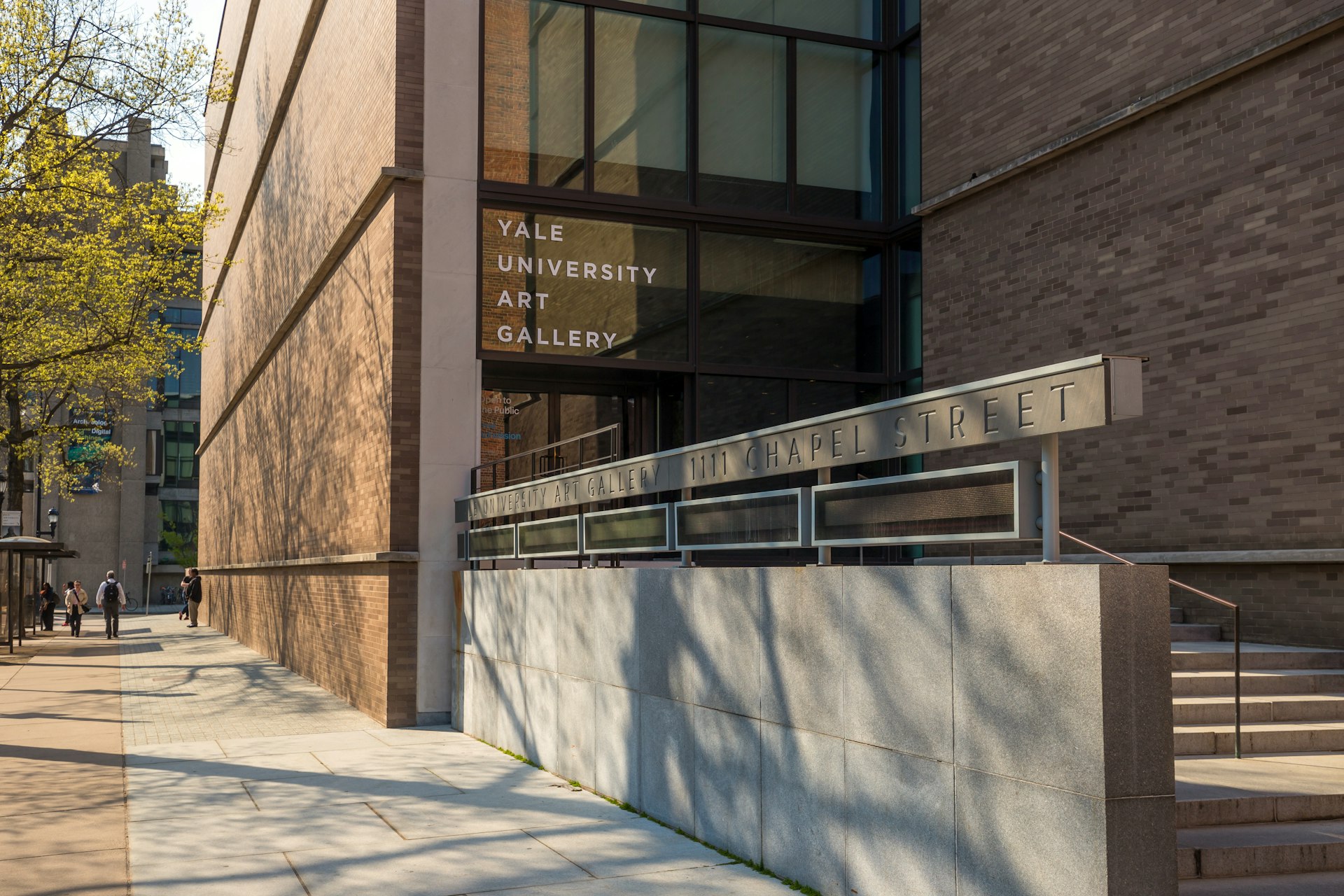
4. Yale University Art Gallery, New Haven
One of Van Gogh’s best-loved pieces from his time in Arles has found its way to the halls of the Yale University Art Gallery in New Haven, Connecticut.
The Night Café depicts the interior of an all-night Arles pub, with drunks sprawled over tables, while the owner stands alone next to an empty billiards table in the painting's centre. The clashing colours and thick paint strokes evoke the raw emotions associated with such a venue, a place where, as Van Gogh said in a letter to his brother, ‘one can ruin oneself’.
After staying up for three nights to finish the painting, Van Gogh gave what would become one of his most celebrated works to the café owner to pay his tab. This was not the only work the painter gave away during his time in Arles, gifting Portrait of Doctor Félix Rey to the sitter upon its completion. The story goes that the physician did not like the portrait, however, and used it to repair an old chicken coop. Today it’s on show at the Pushkin Museum of Fine Arts, Moscow, and thought to be worth over $50 million.
Two other landscape paintings by Van Gogh, one depicting an orchard and another of a square in Paris, are also on display at the Yale University Art Gallery.
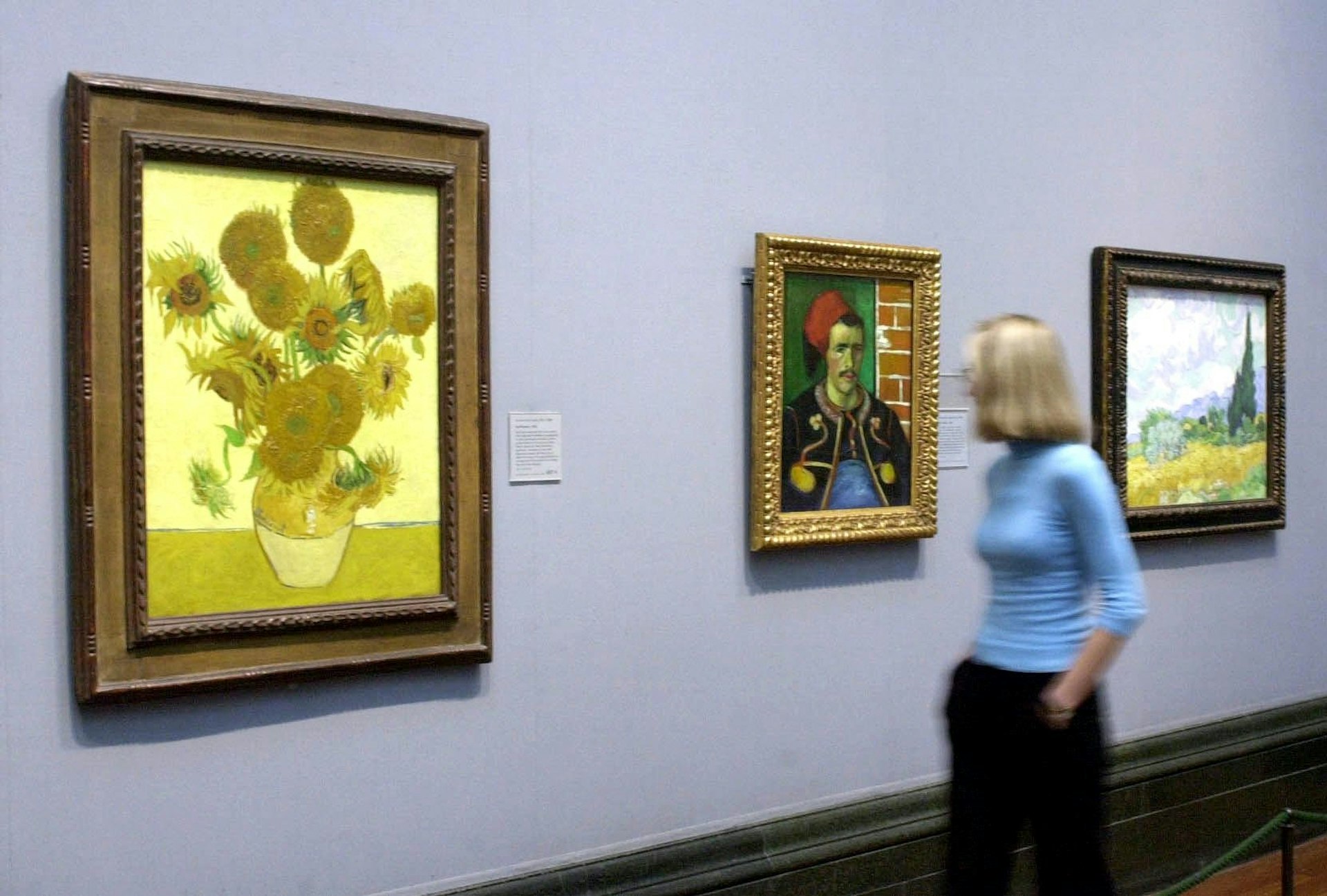
5. National Gallery, London
It was in 1888, towards the end of his time in Arles, that Van Gogh worked on the second of his well-known sunflower series, a project that harked back to his early still life days. One of the best recognised work from the series, Sunflowers Fourth Version, takes pride of place in the National Gallery in London. Other works from the set can be seen at the Neue Pinakothek in Munich, Philadelphia Museum of Art in Philadelphia and Sompo Museum of Art in Tokyo.
Another still life, Van Gogh’s Chair, which depicts the artist’s simple wooden seat and was painted the same year, also hangs in the London gallery. Its spiritual companion piece, Paul Gauguin's Armchair, which depicts the pew of the artist’s long-time friend (Gaugin was living with Van Gogh in Arles during this period), is displayed in the Van Gogh Museum in Amsterdam. Art critics have made much of the symbolism in the two works, suggesting the complementing colours but contrasting style of the chairs (Van Gogh’s simple, Gauguin’s ornate) denotes the highly tumultuous relationship between the pair.
This long relationship would come to a dramatic climax just a few months after the work was finished, when, in December 1888, a heated argument between the two served as the catalyst for Van Gogh cutting off his ear. The two never saw each other again.
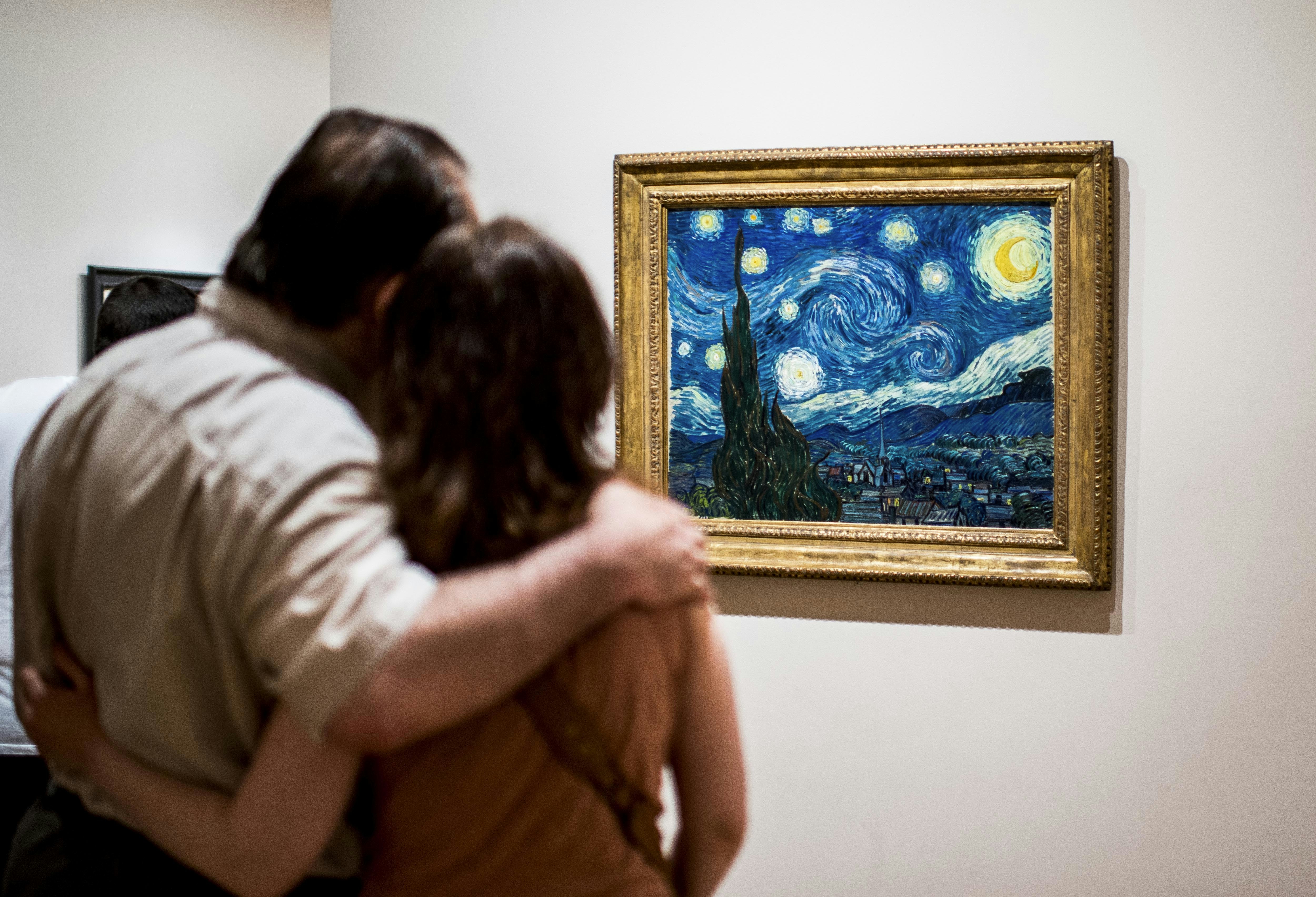
6. The Museum of Modern Art, New York
Following the, now infamous, ear severing, Van Gogh voluntarily checked himself into the Saint-Paul-de-Mausole asylum in Provence, France, in 1889.
Despite his struggles with his mental health, it was at Saint-Paul-de-Mausole that Van Gogh created what many consider his magnus opus, The Starry Night, based on the night-time view from the window of his small room. The painting hangs in the The Museum of Modern Art (MoMA) in New York and is today deemed to be one of the most recognisable works in western art.
Two more works of note from this period are on display at the MoMA. The first is Olive Trees in a Mountainous Landscape, considered by Van Gogh to be a daytime complement to The Starry Night, and Wheat Fields with Cypresses, which the artist felt to be his best day-time work. Both share the emblematic wavy brushstroke technique found in The Starry Night.
Another of Van Gogh’s esteemed works from this period, Irises, which depicts the flowers growing in the gardens of the Saint-Paul-de-Mausole hospital and was the most expensive painting ever sold at the time of sale in 1987 ($54 million), is on display at The Getty Center in Los Angeles, California.
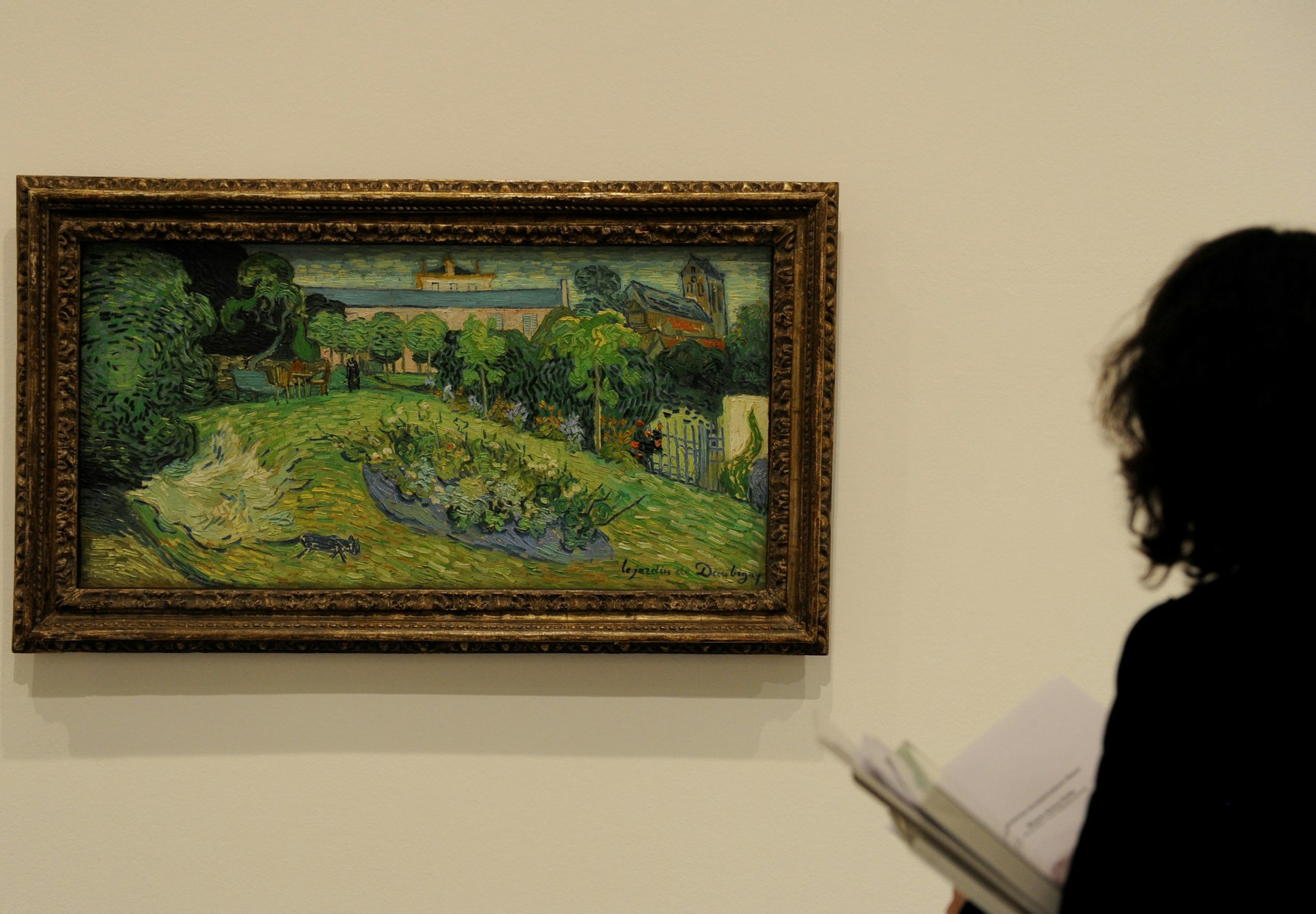
7. Kunstmuseum Basel, Basel
Van Gogh left Saint-Paul-de-Mausole in 1890 and moved to the Parisian suburb of Auvers, where he spent the final year of his life. He initially moved to Auvers to be treated by homeopathic doctor Paul Gachet, but in a letter to his brother, Van Gogh confided that he thought Gachet was "iller than I am.”
His time in Auvers was productive, with the artist producing a number of landscape works including The Church at Auvers, which hangs in the Musée d'Orsay (alongside the aforementioned second portrait of Gachet), Tree Roots, on display at the Van Gogh Museum and the, probably unfinished, Farms near Auvers, now in the National Gallery, London.
The artist’s final completed work is contested, but generally agreed to be Daubigny's Garden. The painting, produced in the summer of 1890, depicts the enclosed garden of the house of Charles-François Daubigny in Auvers, a painter whom Van Gogh admired throughout his life, and hangs in Kunstmuseum Basel, Basel, with another edition in the Hiroshima Museum of Art, Hiroshima and a smaller study in the Van Gogh Museum. The painter likely shot himself within weeks of finishing the piece.
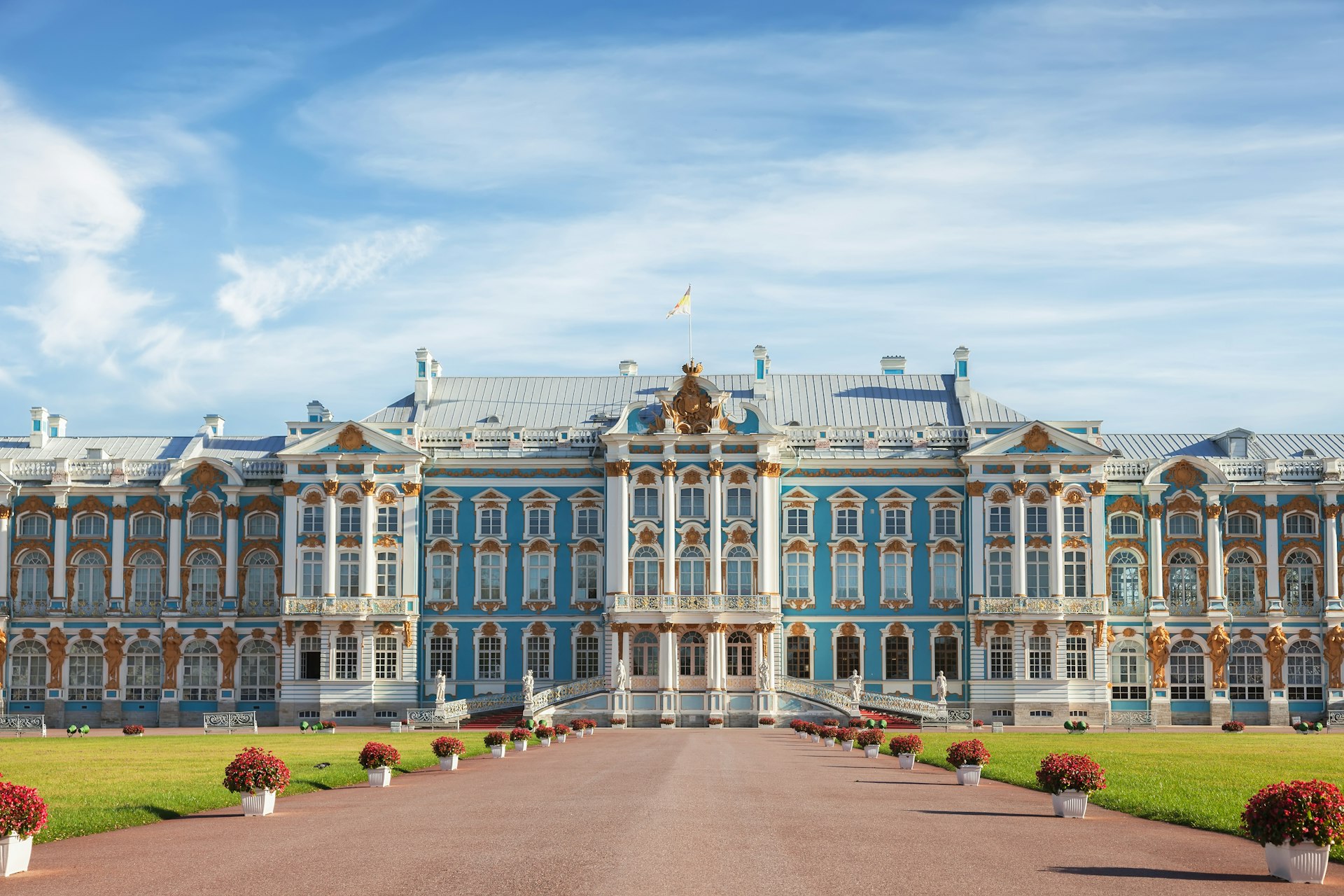
Alongside the first version of Daubigny's Garden, Basel’s Kunstmuseum also displays Marguerite Gachet at the Piano, a portrait of Paul Gachet’s daughter also painted in Auvers, and the landscape work View of Paris from Montmartre painted in 1886.
Van Gogh only sold one painting in his lifetime, The Red Vineyard, which Anna Boch, an impressionist painter, bought for 400 Francs in the final year of Van Gogh’s life. The work now hangs in the Pushkin Museum of Fine Arts, Moscow.
You might also like:
The best museums for American art in the US
Discovering the Louvre's lesser-visited Richelieu wing
X marks the spot: real hidden treasures you can find around the world

